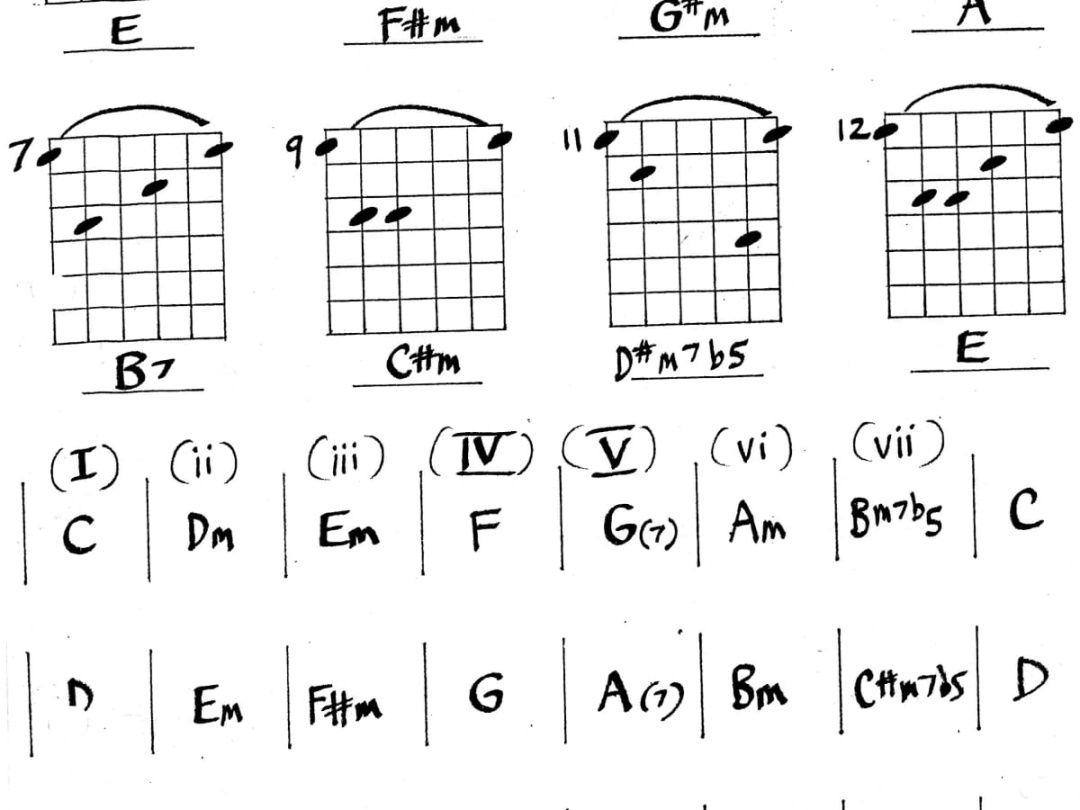Guitar Chord Theory: Demystifying the Fretboard
So, you’re strumming away, maybe you’ve got a few chords under your belt, but you’re wondering, “Where do these chords even come from?” That’s where chord theory steps in. It’s not as scary as it sounds, promise. Think of it like a map for your fretboard, helping you understand how chords are built and how they relate to each other.
Understanding the Basics: Intervals and Scales
Before we get into chords, we need to talk about intervals and scales. An interval is simply the distance between two notes. Think of it like measuring the steps on a staircase. A scale, on the other hand, is a series of notes arranged in a specific order, following a pattern of intervals. The most common scale you’ll encounter is the major scale.

Let’s take the C major scale as an example: C-D-E-F-G-A-B-C. Each note in this scale has a specific relationship to the root note (C). These relationships are what we call intervals.
Major Scale Pattern: The pattern for major scales is whole step, whole step, half step, whole step, whole step, whole step, half step. This pattern is how we build all major scales.
Building Chords: Triads and Beyond
Now, let’s get to the good stuff: chords. A chord is simply a group of notes played together. The most basic chord is a triad, which consists of three notes.
Major Triads: Major triads are built using the root, major third, and perfect fifth intervals from the major scale. For example, a C major triad consists of C, E, and G.
The Circle of Fifths: Your Chord Progression Compass
The circle of fifths is a powerful tool for understanding chord relationships. It’s a visual representation of all 12 major keys and their related minor keys.
Key Relationships: The circle of fifths shows you which keys are closely related to each other. This is important for creating smooth chord progressions.
Chord Inversions: Adding Flavor to Your Playing
Chord inversions are different ways of playing the same chord. Instead of playing the root note in the bass, you can play the third or fifth.
First Inversion: In the first inversion, the third of the chord is in the bass.
Seventh Chords and Beyond: Expanding Your Harmonic Palette
Seventh chords add another layer of complexity to your playing. They consist of four notes: the root, third, fifth, and seventh.
Major Seventh Chords: Major seventh chords have a warm, jazzy sound.
Applying Chord Theory: Practical Tips
So, how do you put all this theory into practice?
Start Simple: Begin with basic triads and major scales. Don’t try to learn everything at once.
Conclusion
Guitar chord theory might seem daunting at first, but it’s really just a set of tools to help you understand and create music. By grasping the fundamentals of intervals, scales, and chord construction, you’ll unlock a world of possibilities on the fretboard. It’s a journey of continuous learning and exploration, and the more you delve into it, the more you’ll appreciate the intricate and beautiful structure of music. Don’t be afraid to experiment, make mistakes, and most importantly, have fun. The fretboard is your canvas, and chord theory is your palette. Start painting!

